Chad Wingard in action for Hawthorn against Brisbane before he was injured last Saturday night. Photo: GETTY IMAGES
HAWTHORN C
The Hawks seemed to be punting on a very quick return to the top bracket and a crack at yet another flag when they added experienced quality in Chad Wingard and a banged-up Tom Scully to their list. Of course, they couldn’t predict a season ending injury to their newly crowned Brownlow medallist, Tom Mitchell, but the big gamble appears to have come up snake eyes. Wingard hasn’t really fired and continues to be sidelined with injury, whilst Scully gets on the ground each week but his impact has been muted. The cost for all of this was Ryan Burton and some late draft picks. Hardly exorbitant, but it’s the investment in injured stars that is misguided.
MELBOURNE C-
My calendar says May has come and gone and nary a sight of Steven May save for the back pages of the dailies. He’s set for a return shortly and may still prove to be a long-term gain, but so far it’s been a worrying gambit. Kade Kolodjashnij doesn’t seem to have added much, though I was just now struggling with the spelling of his surname when I received unexpected assistance from my normally unhelpful autospell, so at least Kade’s made one footy fan happy. Throw in the quizzical addition of ruckman Brayden Preuss that is even more befuddling 11 games into the season, and you can see why the trade period of last year is one of the prime suspects in the “The Mysterious Case of the Disappearing Premiership Contender”.
NORTH MELBOURNE C+
What turned out to be Brad Scott’s last tilt at the finals, bringing a number of high-profile AFL recruits to Arden Street, is now a legacy that Rhyce Shaw has to deal with in his 12-game trial in the coach’s seat. The new man would have no problems with having Jared Polec’s magnet on his whiteboard, but Aaron Hall, Jasper Pittard and Dom Tyson are not as easy to reap a positive result from. Losing Ryan Clarke to the Swans and Brayden Preuss to the Demons has not caused any sleepless nights, so there are some small gains there.
PORT ADELAIDE A-
Port’s list is vastly improved from this time last year and on face value that is thanks to the draft, not the trade period. A closer inspection reveals that a timely farewell bid to Chad Wingard and the more painful departure of Jared Polec turned out to be blessings, as the draft picks the Power received in return landed outstanding youngsters, Connor Rozee and Xavier Duursma. The addition of Scott Lycett, Ryan Burton and Sam Mayes has been less worthy of praise. Most concern is reserved for Lycett and Burton, who are both yet to reproduce the football that brought them to the attention of their new clubs .
RICHMOND C
The 2017 premier was left non-plussed by its early exit at the preliminary final stage last year. The Tigers’ response was to parade the first completed trade of the draft period, Tom Lynch, in front of the cameras and then promptly pack up their belongings and hightail it back to Punt Road. Given Lynch was the only man in and all the outs were more VFL than AFL, their mark is no more or less an assessment of how Lynch has fared at his new club.
ST KILDA C-
Like the Tigers, the Saints put virtually all their eggs into one basket, but unlike Richmond’s Tom Lynch the Saints big investment, Dan Hannebery, hasn’t seen game one yet. What would have been a fail gets an upgrade because of a decent return from the other player traded for, Dean Kent, and the news that Hannebery has just completed a successful on-field return with VFL side Sandringham. The decision to trade out Tom Hickey seems the right one considering his departure opened the first ruck slot now occupied by the highly-promising Rowan Marshall.
SYDNEY B-
If the Swans trade period was more about accountancy than continuing their ascendancy, then mission accomplished. Club champion Dan Hannebery and Gary Rohan were farewelled with the club’s blessings, and the Swans went from a club with salary cap constraints to a club with a war chest. The incoming crew aren’t particularly glamorous, but Jackson Thurlow, Ryan Clarke and even Daniel Menzel (who arrived at Sydney post the trade period as an uncontracted free agent) would be aware of the Swans skill in purposefully re-homing players from rival clubs. So far the trio haven’t taken us back to 2012 or drawn comparisons with premiership heroes such as Ted Richards, Rhyce Shaw or Shane Mumford, but time is still very much on their side.
WEST COAST A
For the reigning premiers, the rule of thumb during trade period has always been about keeping the band together. Understanding that gilding the lily is a risky strategy that could destabilise a winning combination, the post grand-final Eagles focussed their energy on retaining Andrew Gaff’s services with a long-term contract extension. Their ability to do so is worthy of recognition given the crazy money that was being thrown the way of the ex-Victorian. The fact Gaff missed the entire finals series through suspension further complicated his re-signing. On a predictably quiet trade front, West Coast made a minor alteration to their Naitanui insurance policy by bringing in Tom Hickey from the Saints for the Port Adelaide bound Scott Lycett.
WESTERN BULLDOGS B-
The Doggies continued their worrying clean-out of supposedly disgruntled premiership players with the trading of Luke Dahlhaus to the Cats and Jordan Roughead to the Magpies. Both evictees are fixtures at their new clubs, no mean feat given Geelong and Collingwood are first and second favourites to win the flag this year. Injury-prone defender Marcus Adams was also moved on, and he is now Brisbane’s medical staff’s problem. The Doggies quietly brought in Taylor Duryea and Sam Lloyd. Former Hawk Duryea hasn’t been adding much and being brutally honest, mid-sized defenders with few tricks are a dime a dozen. Lloyd, on the other hand, is a small to mid-sized forward with a bag full of tricks and a bloodhound’s snout for goal. The former Tiger is one of the steals of trade period, and is responsible for the Bulldogs’ acceptable half-year grade.
*Here’s PART ONE of Finey’s trade review

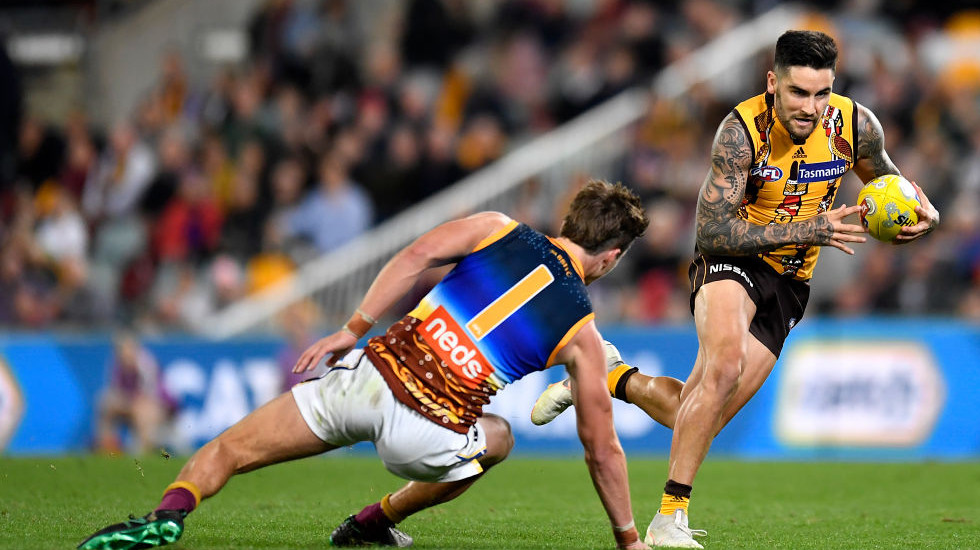
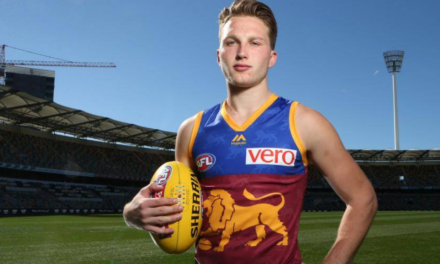

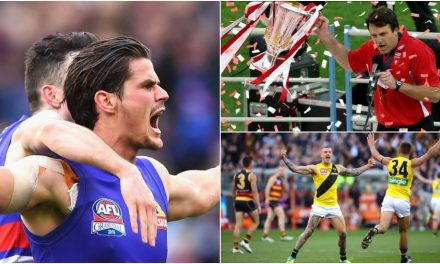



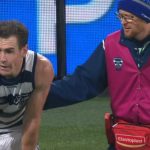
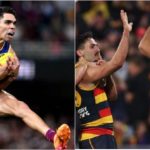
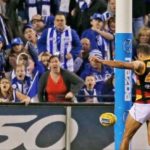

Finey – don’t think you have been watching too many North games if you don’t think Pittard has been a positive. Has been better than Polec for most of the year